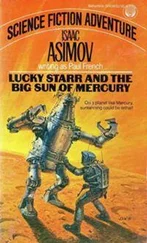Everything has its day.
For Erebus Mine, it was back when it had been the biggest helium-3 extraction facility in the Solar System, when a young Matt Crawford had looked out over the crater floor and watched the lights of the spacecraft out on the landing pads.
Nine years ago, however, those days were over, and the coded instructions that made their way into the mine’s computers didn’t care, just as the minds that took the decision didn’t care.
It was always going to be this way; bringing over 200 people back to Earth was just too expensive. An accident was required, one that would close the mine, and put it forever beyond the reach of prying eyes.
The explosion out at the refinery had been easy; the robots had followed their new instructions and walked into the mouths of the high-pressure turbines. The compressors had exploded in ruin as they ingested the steel bodies of the robots, destroying the processing plant and releasing thousands of tonnes of compressed gas, and the huge main explosion had followed moments later.
The duty controllers at the mine didn’t even had time to understand what was happening. The explosion and fire out at the refinery had distracted them at a critical moment. If they had seen what was happening at their consoles, if they had seen the automated instructions overriding the safety systems and locking them out, perhaps they could have stopped it. As it was, the only warning they had of their doom was the screaming of the pressure alarms as the main hangar doors started to open.
It had been timed to coincide with a shift change, when most of the mine personnel were either in the workings or waiting by the shaft stations, ready to go down.
The maintenance staff in the hangers were the first to die, swept out into the airless crater with the first rush of air. The sound of the alarms and the cries of the workers had been drowned out by the terrible shrieking of the wind, as it carried the air out of the mine.
The duty controllers had reacted quickly when they realised that the mine was losing air, but when they triggered the emergency doors, the system ignored them, and by the time they figured that out, it was too late for the people in the workings and the hangar levels. Everyone who didn’t manage to get behind a working pressure door was unconscious from anoxia in seconds, and dead in minutes.
Those in the accommodation and control levels survived longest; they managed to operate the manual controls and close the pressure doors, sealing themselves in. They managed to contact Earth and relate their plight, before communications were cut.
Before the robots came for them.
The last thing they heard, as they waited for the end, was the relentless pounding of the robots on the sealed pressure doors.
In the abandoned passages and workings of the mine, the mining robots responded to the commands sent out by the central computer, and slowly came back to life. Some did not move, their power packs exhausted after the long years, but the ones that did respond would be more than enough to do the bidding of their masters.
In a parody of resurrection, their mechanical limbs moved in the dust, and the robots started to get up from where they lay. The rings of red LEDs round their video eyes blinked into malevolent life as they stood up, dust streaming down from their armoured bodies.
Their orders were clear, just as they had been nine years ago. Destroy communications. Kill the personnel. Only this time, it would be done properly; there would be no evidence, no survivors hiding out in sealed rooms, and no possibility of any mission coming back to discover what had happened.
The robots started to move, marching down the empty passages towards the reactor complex, out on the crater floor.
The compact nuclear reactor was coming up to power, its control rods withdrawn. It was a safe and reliable design, used throughout the Solar System in remote outposts. Even starved of coolant flow, the reactor would take some time to reach dangerous temperatures, and well before then, the fusible plugs that held back tanks of neutron absorber would have melted, drenching the core in gadolinium nitrate and quenching the nuclear reaction.
The robots that broke down the armoured doors and walked into the reactor containment knew their duty: to sacrifice themselves, just as their comrades had sacrificed themselves all those years ago to cause the explosion in the heart of the refinery.
They moved across to the straining feedwater pumps and closed the manual isolation valves hard shut, preventing the emergency override from sending any cooling water flow to the overheating core. More robots tore into the control rod emergency drop mechanism, jamming the boron steel rods in the raised position, where they could not halt the rising temperatures in the core.
Others severed the pipework leading from the neutron absorber tanks. The gadolinium solution spilled away into the containment drains, removing the last line of defence against an uncontrollable runaway reaction that would destroy the reactor and the mine.
It would not be a nuclear explosion; no fission reactor contained enough material to do that, but it did not need to be. The reinforced core would rupture and explode with sufficient force to level the entire surface facilities and devastate the upper workings, and flood the entire mine with deadly radionuclides.
And then there were the intruders.
Two of them were dead already; Bob Five had seen to that, but four more remained at large. The robots’ slow brains dealt with this issue logically, just as they had before; the survivors would be hunted down and killed; it was just a matter of time.
Matt and Bergman ran along the haulage way, away from the robot, and back towards the deeper parts of the mine.
‘Which way?’ Bergman panted, as the fork leading to the sub-main shaft station came into view.
‘Go right,’ Matt said, ‘into the workings.’
They veered off, away from the shaft station, and through the pressure doors that they had seen on their first exploration.
Bergman stopped on the other side, and hit the manual door close button. The twin halves of the door slid shut, and closed with a clunk.
‘Can the robot operate the controls?’ Bergman asked anxiously, looking at the doors. He could hear the steady thump of the approaching robot on the other side.
‘Yeah, it can. Hold on.’ Matt opened an access panel on the door control box, found the isolation switch, and turned it to the locked position.
‘That should slow it down a bit – it’ll have to break through the door to follow us,’ Matt said with satisfaction.
They set off again at a run, trying to put as much distance between themselves and the robot as they could.
Suddenly, from the comlink in Bergman’s pocket, came an anguished cry:
‘Crawford, Bergman – please respond. Abrams, Elliott, if you can hear me, respond. If anyone can hear this message, please respond!’
Bergman tried to answer his comlink while he ran, but it slipped from his fingers and fell into the dust on the floor. He swore, and stopped to go back for it.
Behind them, on the other side of the locked pressure door, the robot heard the transmission as well. It swivelled its head to one side of the passage, and lumbered over to a cable bundle. Raising one of its arms, it slid a pincered hand round the cables, and sliced them cleanly in two. There was a loud bang and a bright flash as it cut off power and communications to the rest of the passage.
Bergman got to the comlink, just as the lights went out.
‘Fuck!’ he yelled, scrabbling to pick it up in the darkness. He opened the handset and read the illuminated display.
Читать дальше











